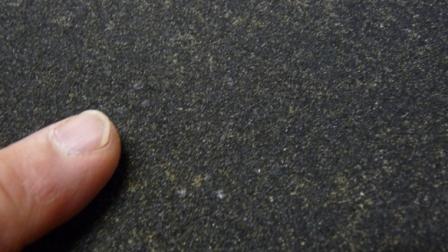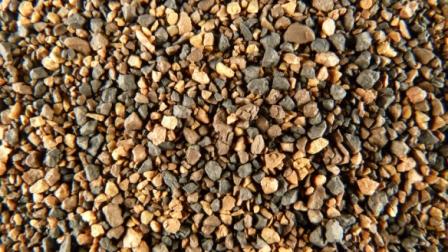Mastering Roof Inspections: Asphalt Composition Shingle, Part 4
by Kenton Shepard and Nick Gromicko, CMI®
The purpose of the series “Mastering Roof Inspections” is to teach home inspectors, as well as insurance and roofing professionals, how to recognize proper and improper conditions while inspecting steep-slope, residential roofs. This series covers roof framing, roofing materials, the attic, and the conditions that affect the roofing materials and components, including wind and hail.

“Back-surfacing” is a coat of finely pulverized mineral, such as talc, sand or limestone.
Back-surfacing is applied to the backs of shingles to help keep them from sticking to manufacturing equipment during production and from sticking to each other, once they’re stacked. If you rub your finger on the back of the mat, you can feel the gritty back-surfacing.
Granules

Granules embedded into the weather surfaces of shingles are made from fine-grain, opaque, crushed rock particles. Opaque granules don’t allow light to pass through.

After being run through a screen to help ensure uniformity of size, they’re covered with a colored ceramic coating.

The uniformity with which granules are applied can affect the way they look on the roof.
Granules have four main purposes:
1. They reflect sunlight, which helps keep the roof cool. Keeping the roof cool will help slow the loss of volatiles which keep shingles flexible, durable and waterproof. Reflecting sunlight also helps protect the asphalt from the damaging ultraviolet or UV radiation in sunlight.
High-tech granule coatings originally developed by the military to make tanks less visible to radar are now being used to coat shingle granules. These coatings reflect up to three times the amount of light reflected by conventional granules. This can help keep roofs cooler in hot climates, which extends the service life of the shingles and reduces home cooling costs. In colder climates, it may also interfere with the ability of the adhesive strip to fully bond.2. Granules add weight, which helps the adhesive strip to bond well and improves wind-resistance.
3. They also make shingles more durable by protecting them from weathering and abrasion.
4. Lastly, granules improve shingle fire-resistance.**************************************************
Learn how to master a roof inspection from beginning to end by reading the entire InterNACHI series: Mastering Roof Inspections.
Take InterNACHI’s free, online Roofing Inspection Course
Mastering Roof Inspections
Roofing Underlayment Types
Inspecting Underlayment on Roofs
Fall-Arrest Systems
Roofing (consumer-targeted)
More inspection articles like this

